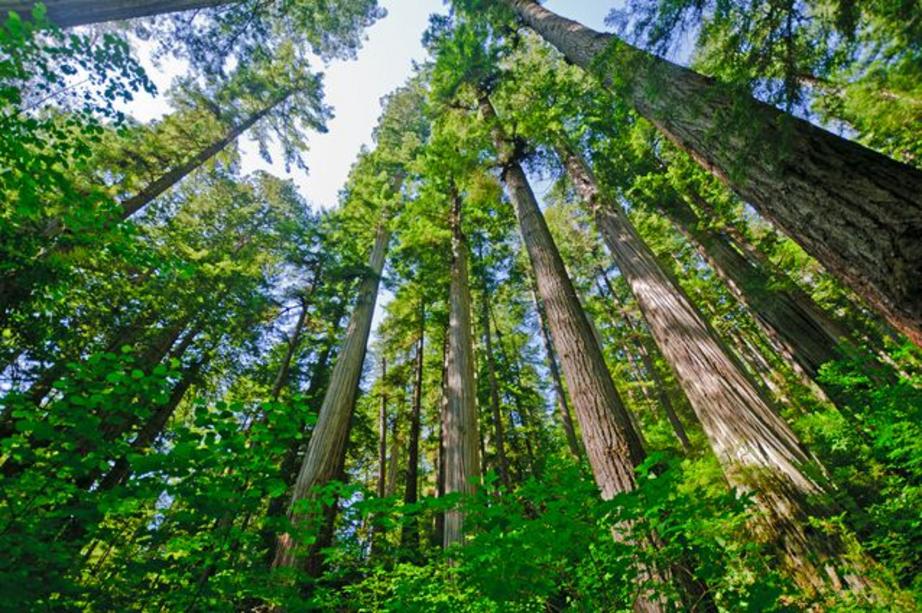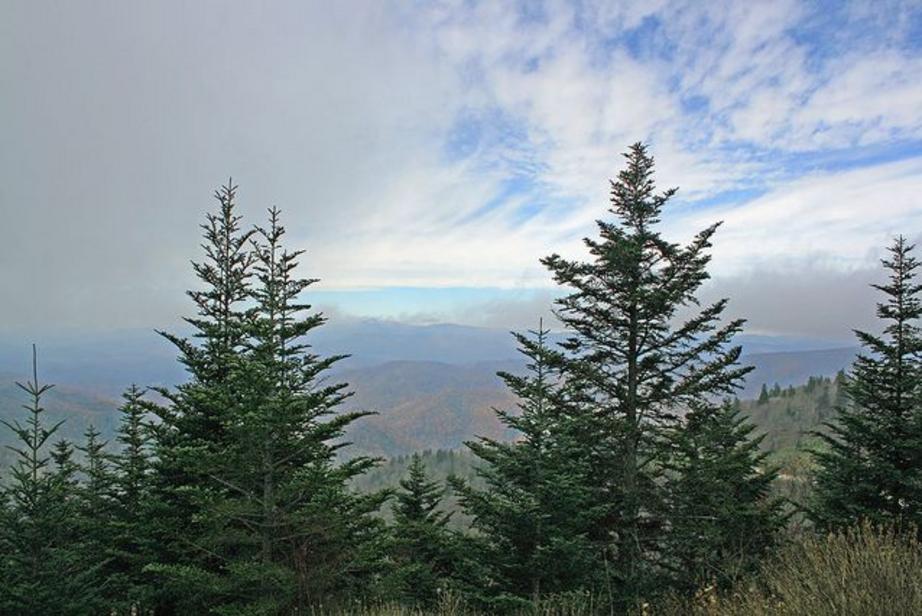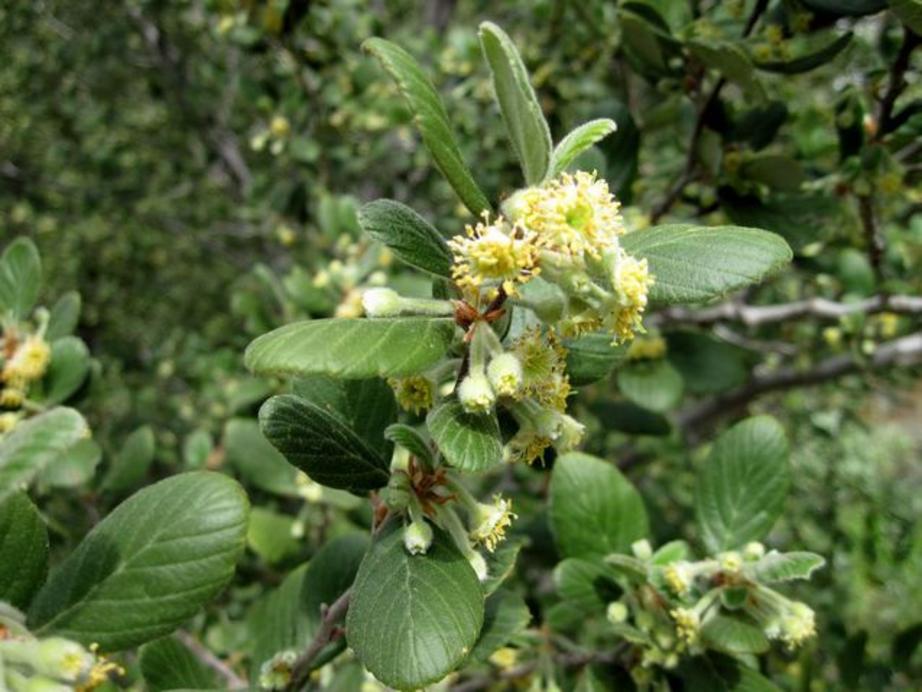The most endangered trees in America
Close to extinction
More than 6,400 trees are listed as globally threatened on the IUCN Red List, according to the Global Trees Campaign. Over 1,100 trees are critically endangered and in need of immediate conservation action. By some estimates, as much as 10 percent of the world's trees worldwide are threatened with extinction — and many of those are in our own backyard.
From the California coast to an Arkansas forest, the United States is home to several species of threatened and endangered trees. Their populations have decreased due to disease, insects and pests, development, logging and more.
Here are 11 types of trees in America with an uncertain future.
Maple-leaf oak (Quercus acerifolia)
It's name says maple but make no mistake: This is an oak tree with maple-tree-shaped leaves — a rare species that only grows in steep, rocky forests of the Ouachita Mountains (pictured) in west central Arkansas and southeast Oklahoma. It's listed as endangered on the IUCN Red List due to habitat degradation, with fewer than 600 individuals left in the wild.
Maple-leaf oak trees grow to 40 or 50 feet tall, the Missouri Botanical Garden says, and the leaves on this deciduous tree of the red oak group are yellowish-green.
Seventy-eight species of oak trees are threatened around the world, including 17 in the U.S., according to Botanic Gardens Conservation International.
Hawaiʻi alectryon (Alectryon macrococcus)
Fewer than 300 Alectryon macrococcus plants remain in the wild, and the population has been steadily declining due to invasive species, habitat destruction and fire. Rats and seed-boring insects are known pests as they eat the seeds, according to the University of Hawaii. Grazing cattle or deer have also kept the tree's population limited.
This slow-growing tree is endemic to the Hawaiian islands and listed as critically endangered on the IUCN Red List. In its name, macrococcus is from the Greek macrococca, which means having large fruit, referring to the large arils this species produces.
Florida yew (Taxus floridana)
There's only one known tiny population of this critically endangered tree species: a 9-square-mile section of ravines and bluffs along the Apalachicola River in in northern Florida. A lack of regeneration, an increasing deer population and declining habitat quality are the main culprits for the dwindling number of plants, according to the IUCN Red List.
The United States Botanic Garden, which calls the Florida yew one of the rarest trees in the world, says another reason the trees are endangered is because many are on private land, and endangered species laws do not protect endangered plants on private property.
The botanic garden uses the Florida yew to show why conserving these trees is so important. The bark on this species of yew contains the cancer-fighting compound taxol, which has proven useful in treating breast cancer, ovarian cancer, some kinds of leukemia and certain kidney diseases.
Two California redwoods
You can't get much more American than California's redwood forests, mentioned in the chorus of Woody Guthrie's famous folk song, "This Land Is Your Land." But two redwood species — coast redwoods (Sequoia sempervirens) and giant sequoias (Sequoiadendron giganteum) — are listed as endangered on the IUCN Red List.
Though many of the trees are in protected areas, such as Redwood National Park, the populations continue to decline due to "inadequate regeneration and natural death of (over)mature trees, which are being replaced by other, competing conifers," according to IUCN.
The fast-growing coast redwood is the world's tallest tree species, according to the Global Trees Campaign, and the oldest one on record is 2,200 years old. And though giant sequoias, which can grow to over 250 feet tall, still number in the tens of thousands, they were logged extensively in the past and their numbers continue to decline today.
 Photo: Wildnerdpix/Shutterstock
Photo: Wildnerdpix/Shutterstock
Longleaf pine (Pinus palustris)
The IUCN lists this species of pine tree native to the Southeast United States as endangered, but they say it may qualify as critically endangered if the time frame for assessing the threat level was expanded. The declining population of this species is mostly due to logging.
"Longleaf pine ... was heavily exploited since Europeans settled in the Coastal Plains and served a major forest industry in the region. Its wood is used for sawlogs, stage flooring, plywood, pulpwood and produces poles, fence posts, and piling as it makes straight stems largely free of branches when grown in closed stands. Turpentine and other chemicals can be distilled from the chipped wood," the IUCN says.
This tree likes a warm, humid climate and tends to hug the coastline, but extends into the foothills of the southern Appalachian Mountains.
 Photo: Nikolay Kurzenko/Shutterstock
Photo: Nikolay Kurzenko/Shutterstock
Fraser fir (Abies fraseri)
That's right, your favorite type of Christmas tree is officially endangered. And while chopping down millions of these trees each year might seem to be the cause, the problem is actually an insect: the balsam woolly Adelgid (Adelges piceae), which came from Europe in the 1950s. Once the tree is infected with the insect, it basically starves. By the 1980s, millions of trees had died, according to the Global Tree Campaign.
Today, this species is found toward the top of the Appalachian Mountains in southwestern Virginia, western North Carolina and eastern Tennessee. Preserving the Fraser fir is critical to the rare animal species that live in those areas and rely on the tree, the Global Tree Campaign says, such as the northern flying squirrel, Weller’s salamander, the spruce-fir moss spider, mountain ash and rock gnome lichen.
 Photo: Gene/Wikimedia Commons
Photo: Gene/Wikimedia Commons
Florida torreya (Torreya taxifolia)
This is the second Florida-specific tree on the list, as well as the second yew — in fact, this critically endangered tree is also known as the stinking yew because its leaves, when crushed, give off a turpentine odor. These slow-growing trees, which can be 40 feet tall and 20 feet wide, are native to a 40-mile stretch of the Appalachicola River in northern Florida, though they are rarely found in the wild, according to the University of Florida IFAS Extension.
The Florida torreya, an evergreen conifer tree, has seen a 98 percent decline in population within the last three generations, according to IUCN. Fewer than 600 individual trees remain
Loulu (Pritchardia kaalae)
Fewer than 130 individual Loulu trees remain in the Waianae Mountains on the Hawaiian island of Oʻahu. The critically endangered palm tree's main threat is rodents and other animals that eat its seeds, preventing regeneration, according to the IUCN.
Also known as a wahane, these trees can grow up to 30 feet tall and bloom with yellow flowers in December. According to the University of Hawaii, Loulu means "umbrella," and the tree got its name because the leaves were formerly used as protection from rain or sun.
Virginia round-leaf birch (Betula uber)
Found only in — you guessed it — Virginia, this critically endangered tree was believed previously to be extinct. However, according to IUCN, it was rediscovered along Cressy Creek in 1975 and is now "found in highly disturbed second-growth forest" along a tiny stretch of the river in Smyth County. Only about 11 individual trees remain.
Virginia round-leaf birch trees have dark green leaves (this photo was taken in autumn) and produce catkins up to 2.5 inches long. Though the trunks are slim, they can grow up to 60 feet tall, according to Virginia Tech's Department of Forest Research and Environmental Conservation.
 Photo: Jean-Pol GRANDMONT/Wikimedia Commons
Photo: Jean-Pol GRANDMONT/Wikimedia Commons
Gowen cypress (Cupressus goveniana)
Also known as the dwarf cypress and Santa Cruz cypress, fewer than 2,300 individual Gowen cypress trees are found in just five counties in California: Mendocino, Sonoma, Santa Cruz, San Mateo and Monterey, according to the IUCN, which lists the tree as endangered.
These trees are usually around 30 feet tall but can grow much taller if conditions are right. The U.S. Forest Service says the population is declining due to rodents and deer eating seedlings, livestock grazing on them and trampling them, and a fungus called coryneum canker, which kills the tree and spreads from tree to tree through the distribution of spores.
Catalina mahogany (Cercocarpus traskiae)
This small tree is endemic to Catalina Island with only one single population remaining in the wild, according to IUCN, which lists the Catalina mahogany tree as critically endangered. About seven individual trees remain of a species that the Catalina Island Conservancy calls one of the rarest in the U.S.
But conservation efforts have momentum, the conservancy says. Researchers found that this plant was not successfully reproducing, so the island fenced in the plants to protect them from hungry animals. And each summer, biologists assess the trees' health, look for fungus or insect damage, track growth patterns and measure fruit production.
 Photo: Calscape/California Native Plant Society
Photo: Calscape/California Native Plant Society

